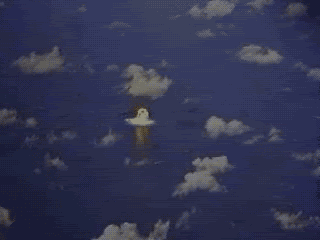Climatic Cataclysm: The Foreign Policy and National Security Implications of Climate Change. Edited by Kurt M. Campbell. Brookings Institution Press, 2008, 237 pp., $28.95 (hardcover).
The release of Vice President Al Gore’s documentary, An Inconvenient Truth, sparked renewed interest in the national security implications of global climate change. Last year a Center for Naval Analysis report concluded, “climate change poses a serious threat to American national security.”[1] This June, a National Intelligence Assessment on the impact of climate change judged, “the most significant impact for the United States will be indirect and result from climate-driven effects on many other countries and their potential to seriously affect US national security interests.”[2] One recent addition to this chorus of concern is Climatic Cataclysm, an anthology edited by Kurt M. Campbell. Seven of the twelve authors hail from the Center for New American Security or the Center for American Progress. Two others served in the Clinton administration.
The analysis of Dr. Campbell and company depends upon the validity of existing climate models. Dr. Jay Gulledge, a senior scientist for the Pew Center on Global Climate Change, provides the scientific foundation for three climate change scenarios: expected, severe and catastrophic.[3] He used climate models to project temperature increases and then extracted the relevant environmental impacts from the Intergovernmental Panel on Climate Change’s Fourth Assessment Report.[4] The other authors then applied their considerable national security expertise to create plausible geopolitical scenarios. Dr. Gulledge is careful to point out that the scenarios are not predictions of the future. Rather, they are projections that “[describe] an outcome that is deemed plausible, often subjectively, in the context of current uncertainties” (p. 51).[5] The authors do not associate likelihood with any scenario, yet they describe the first one as expected.[6]
In scenario one, global average temperature rises 1.3ºC above 1990 levels by 2040 and global mean sea-level rises by 0.75 ft.[7] The authors describe a domino effect where water shortages lead to food shortages, which lead to conflicts over these resources, which lead to migrations and new conflicts in adjoining regions.[8] The developing world is most at risk, but wealthy nations are not immune. The authors call on the UN, EU and U.S. to prepare to respond to the expected humanitarian crises.[9] Furthermore, unrest in the developing world leads to disruptions in oil production that put upward pressure on energy prices.[10] Russia is one of the few nations that stands to gain in this scenario since it is an exporter of energy and is likely to see increased crop production from warmer temperatures in higher latitudes.[11] Of greatest concern is that the authors believe this scenario “is to a large extent inevitable” (p. 97).[12]
Scenarios two and three arbitrarily double scenario one’s average temperature rise to 2.6ºC in 2040 (scenario two) and 5.6ºC in 2100 (scenario three).[13] The associated sea-level rises are 1.7 ft and 6.6 ft respectively.[14] The authors consider this increase plausible because existing models do not include feedback mechanisms, such as the release of greenhouse gases from melting permafrost.[15]
The author of scenario two waxes Malthusian in concluding that a reduction of the human population is an inevitable consequence of severe climate change. War and disease cause vulnerable populations to die off. Worse still, a nuclear exchange could decimate the human race.[16] As an alternative, he suggests states may establish reproductive restrictions to control population growth.[17] This is morally repugnant to those who value reproductive freedom, but attitudes may be different in 2040.
Scenario three paints an even worse picture. Large democracies such as India collapse. China’s gains over the last century are completely reversed. Los Angeles, New York, Houston and other U.S. coastal cities become uninhabitable after 2040. The developed world is entirely preoccupied with its own survival and becomes isolationist. Genocide reigns unchecked in Africa. Still, scarcity eventually returns the Earth into balance, but at an extremely high price.[18]
Although the authors’ analysis focuses on the impact rather than the causes of climate change, the solutions they offer are entirely focused on prevention. R. James Woolsey, former director of the CIA, offers the most interesting solutions from a military perspective. Woolsey writes a fictional dialogue between John Muir, founder of the national parks system and first president of the Sierra Club, and General George S. Patton. During the discourse, the two agree on nine policy options that have the dual effect of reducing the CO2 emissions and reducing vulnerability to malignant threats. Providing tax-incentives for plug-in hybrid electric vehicles for example, serves to reduce both greenhouse gas emissions and dependence on foreign oil. Promoting micro-power generation using wind turbines and solar panels reduces emissions and diversifies power production making energy infrastructure more resilient to attack.[19]
One point of disagreement between the fictional Patton and Muir is the production of coal-to-liquids (CTL) fuel. Muir dislikes it because of the CO2 it emits, but Patton likes it because it undermines oil.[20] Coal is abundant in the U.S., and CTL fuel is one of the few alternatives to petroleum that can power aircraft. As the leading U.S. government consumer of oil, the Air Force is interested in procuring half of its fuel from synthetic sources by 2016.[21] Although the proposal is not economical when oil trades below $60 a barrel, there is strategic value having alternatives to foreign oil.[22]
The strength of Climatic Cataclysm lies in the authors’ sound geopolitical analysis of the impact of potential climate change. However, they offer little in analyzing the cause. While climate scientists deem the scenarios plausible, they offer no way of evaluating their likelihood. This makes weighing the merits of policies such as the Air Force’s CTL plan difficult. Do the possible long-term consequences of global climate change outweigh the clear near- term benefits of reducing dependence on foreign oil? Climatic Cataclysm offers no answer. However, the authors do provide an imaginative and worthwhile examination of what could turn out to be the greatest threat to our nation’s security.
-----------------------------------------
[2] Office of the Director of National Intelligence, “Statement for the Record of Dr. Thomas M. Fingar, Deputy Director of National Intelligence for Analysis and Chairman of the National Intelligence Council, before the House Permanent Select Committee on Intelligence and the House Select Committee on Energy Independence and Global Warming,” 25 June 2008, 4; available from http://www.dni.gov/testimonies/20080625_testimony.pdf; internet; accessed 19 Dec 2008.
[3] Kurt M. Campbell and others, Climatic Cataclysm: The Foreign Policy and National Security Implications of Climate Change (Washington, DC: Brookings Institution Press, 2008), 17.
[4] Jay Gulledge, Climatic Cataclysm, 49.
[8] John Podesta and Peter Ogden, Climatic Cataclysm, 98.
[13] Dr. Gulledge admits the doubling of the temperature for scenario three is arbitrary but plausible. Climatic Cataclysm, 57.
[16] Leon Furth, Climatic Cataclysm, 144.
[18] Sharon Burke, Climatic Cataclysm, 155-167.
[19] James R. Woolsey, Climatic Cataclysm, 181-187.





















